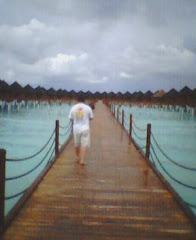After finishing lunch at Kyouraian, we decided to explore more temples in Kita Kamakura. As we were leaving the restaurant, I spotted a Japanese style hearse. Did you know in Japan, if you see a hearse, then you should hide your thumbs. I had to ask a Japanese friend about this practice. You see, in Japanese, your thumbs are called your oya yubi, and oya means "parents" in Japanese. As the hearse is the vehicle that carries the deceased, you want to protect from the Grim Reaper by hiding your "parents".
去来案で食事を終わったら、北鎌倉にあるお寺巡りを始めました。店から出たすぐに、自分が日本式の霊柩車を見ました。昔聞いた話で、霊柩車を見かけると、親指を隠すべきと言われた。最初その意味が分からなくて、日本人の友達に聞いてみました。霊柩車は亡くなった人を運ぶ車なので、自分の親を守る為、自分の”親指”を隠す。なるほど。納得!
Japanese style hearse / 日本式の霊柩車
We came to the entrance of one of the larger temples in Kita Kamakura.
北鎌倉で結構大きなお寺の来ました。来ました。
The name of the temple we went to is called Kenchoji-Temple.
次探索するお寺は建長寺。
The area around Kenchoji-Temple is pretty vast.
建長寺境内図を見ると結構広い感じしますね。
First, we had to pass through the So-mon Gate. This current gate was constructed at Hanjuzanmai-in Temple in Kyoto in 1783 and transferred to Kenchoji Temple in 1940.
最初にくぐらなきゃいけないのは建長寺の総門。現在の総門は京都のお寺で1783年に作られ、1940年に北鎌倉の建長寺に送られた。
This is the San-Mon Gate, the inner gate you must go through before you reach the main temple.
これが建長寺の山門。
山門の前に立ってる僕発見出来ましたか?
Statue of Pindola (Obinzu in Japan) an arhat in Buddhism who is reputed to have the gift of healing. You rub the part of the statue corresponding to where your pain is and it is believed you would be healed.
おばんずるさま。痛いところを摩ると治して下さいます。
Bonsho - this bell was cast in 1255.
梵鐘 ー この鐘は1255年に作られたものです。
And you will finally reach the butsuden.
そして仏殿に辿り着く。
Kenchoji Temple's Byakushin (Chinese juniper).
建長寺の柏槇(びゃくしん)。
Butsuden / 仏殿
Inside the butsuden.
仏殿の中。
The Kara-mon Gate / 唐門
Hatto / 法堂(はっと)
The hojo or ryuo-den used to be the residence of the chief priest but now it is used for Buddhist memorial services, meditation, and training.
方丈(ほうじょう)。昔は受持(住職)が居住する場所でした。現在は法要・座禅・研修の場所で使われていm
Tokugetsu-ro / 得月楼
Teien (Garden) / 庭園
And now we are headed for the Hansobo which is located at the top of the mountain.
これから搬僧坊を目指す。山の上にあるので頑張って登ります。
The sign is pointing the way to Hansoubou.
搬僧坊への道を親切に示している。
More steps to climb.
階段をますます上ります。
We can see our final destination on the Kenchoji Temple grounds.
建長寺の境内の最後の目的地が見えてきた。
Looking back towards Kenchoji Temple and the city of Kamakura.
山の上が見る建長寺と鎌倉。
Watching people walk back down the way they came.
建長寺に戻る人々を見送る。
And here we are at Hansoubou.
目的地の半僧坊に到着。
On a clear day, you could see Mount Fuji from here.
天気の良い日には上記の写真みたいに富士山が見える。
A red torii and stairs leading to the Kofuku Inari Dai Myojin.
赤い鳥居をくぐって、階段を上ると巨福稲荷大明神が現れる。
Kofuku Inari Dai Myojin / 巨福稲荷大明神
These stairs are dangerous and are no longer in use.
階段があぶないから”登るな”と書かれてます。
Or course I got my temple seal as well.
もちろん建長寺の御朱印もゲットしました。
Still, this doesn't end our Kita Kamakura day trip. We will explore one more temple before we head back home. So the journey continues...
さて、これで北鎌倉の旅が終わったわけではありません。もう一つのお寺を探索してから、帰る予定。とういうことで旅がつづく。。。













































































.jpg)


